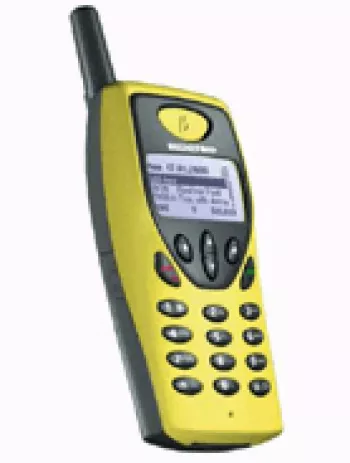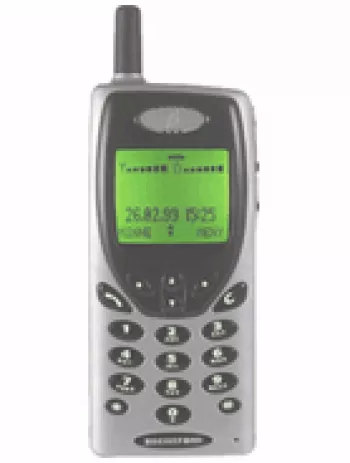
Overview and Introduction
The Benefon TWIG Discovery was a notable mobile phone released in June 2006. It was an interesting device, integrating GPS technology in an era where such features were not common in mobile phones. Although discontinued now, the TWIG Discovery offered a range of features that set it apart from many other feature phones of its time.
Design and Build
The phone had dimensions of 116 x 51 x 24 mm and weighed approximately 128 grams, making it moderately bulky by today's standards but quite standard for its time. The body was made to be durable, employing a design that anticipated the rigors of outdoor use. The device used a Mini-SIM and was finished in a classic black color.
Display
Equipped with a 2.0-inch TFT display providing 256K colors, the screen had a resolution of 176 x 220 pixels. This resolution offered a pixel density of about 141 ppi, which was adequate for simple graphics and text, typical of feature phones at the time. However, the screen’s size and resolution were not intended for multimedia usage, focusing instead on functionality and readability in various light conditions.
Network and Connectivity
The Benefon TWIG Discovery supported GSM technology with 2G bands for GSM 900 / 1800 / 1900, a configuration suitable for ample coverage in many regions. It also included GPRS Class 10 technology, though EDGE was not available. Notably, the phone was equipped with Bluetooth technology and contained a proprietary USB port for connectivity, omitting modern conveniences such as WLAN and 3.5mm audio jacks.
GPS Functionality
A standout feature of the TWIG Discovery was its GPS functionality. In a pre-smartphone era where GPS devices were typically separate units, the integration of GPS was a revolutionary addition for explorers and professionals who required navigation capabilities. This feature underscored the phone's utility as a device for outdoor activities and navigation rather than a multimedia center.
Battery Life
Powered by a removable Li-Ion 1000 mAh battery, the phone was designed for extended use without frequent recharging. As a feature phone, it benefited from lower power consumption than more modern devices, likely offering days of standby time and extended talk time, suiting its purpose as a reliable communication device for adventurers.
Memory and Storage
The phone offered a card slot for miniSD cards, allowing users to expand storage beyond the internal memory. It supported a substantial phonebook and maintained call logs for 40 dialed, received, and missed calls, respectively, which fulfilled the basic requirements for communication management.
Sound and Alerts
In terms of audio, the phone lacked a loudspeaker, but it supported vibration alerts and polyphonic ringtones. The absence of a 3.5mm jack suggested reliance on proprietary or Bluetooth devices for audio output, if any were supported.
Messaging and Software
The messaging capabilities included SMS, MMS, and Email, with a simple WAP 2.0/xHTML browser for basic internet browsing. The phone also came pre-loaded with five games: Diamond, Bubble, Tic Tac, Poker, and Pushbox, aimed at providing entertainment without the need for additional software, given the absence of Java support.
Launch and Market Status
The phone was officially announced in June 2006, and despite being discontinued, it remains a fascinating example of early attempts to integrate mobile communication with GPS technology. As a discontinued model, it holds a place in the niche market of collectible and functional vintage technology items.
Conclusion
In retrospect, the Benefon TWIG Discovery was an innovative device for its time, especially for users who valued reliable communication and GPS functionality over multimedia features. While it might be considered obsolete today, it paved the way for the integration of GPS in mobile devices, a feature that is now almost universally standard in smartphones.
Key Features of Benefon TWIG Discovery
- GSM Technology with 2G bands support for GSM 900 / 1800 / 1900
- GPRS Class 10 available for internet connectivity
- Compact dimensions of 116 x 51 x 24 mm and lightweight at 128 g
- 2.0-inch TFT display with 256K colors and a resolution of 176 x 220 pixels
- Expandable memory via miniSD card slot
- Bluetooth connectivity for wireless data exchange
- Built-in GPS for positioning and navigation
- Support for SMS, MMS, and Email messaging
- Comes with five pre-installed games: Diamond, Bubble, Tic Tac, Poker, Pushbox
- Removable Li-Ion 1000 mAh battery for power management
Drawbacks of the Benefon TWIG Discovery
- No EDGE support, limiting faster data transfer capabilities.
- No loudspeaker present for hands-free audio.
- Lacks a 3.5mm headphone jack which limits standard audio device connectivity.
- No built-in camera, restricting multimedia capture capabilities.
- Absence of WLAN, limiting internet connectivity to mobile data only.
- No FM radio functionality.
- Uses a proprietary USB connection which can limit charging and data transfer compatibility.
- No Java support for additional applications and customization.
- No advanced sensors for additional functionality or features.
- The 21.3% screen-to-body ratio results in a smaller display area relative to the device size.
- Discontinued status, making support and spare parts potentially difficult to obtain.

View Also
More Phones
All Rights Reserved +13665 Phones © Mobilawy 2025





















